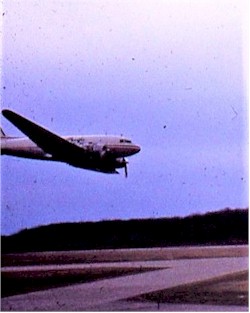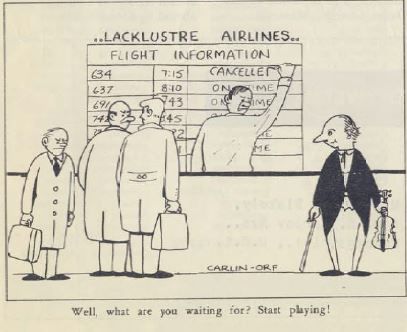|
James Fraser sent us this information and photos - I just read the article in NetLetter #1487 (Submitted Photos) and would like to add more info on the DC-3.
I worked at YXSAP (Prince George, B.C.) in 1969 and was there for the last of an era- DC-3 's.... CP had 3 based in YXS until April '69 and had 2 main routes....YXS to YYD (Prince George to Smithers, B.C.) and YXS-YQZ-YWL-YKA (Prince George - Quesnel - Williams Lake - Kamloops, B.C.). This date also marked the arrival of CP Air and the B737....... orange is beautiful !!!! I have attached a couple of photos taken at Prince George Airport. Left: Canadian Pacific DC-3 on approach - 1969. Below: Canadian Pacific DC-3 and B-737 on the tarmac. Regards Jim Fraser, PEI |
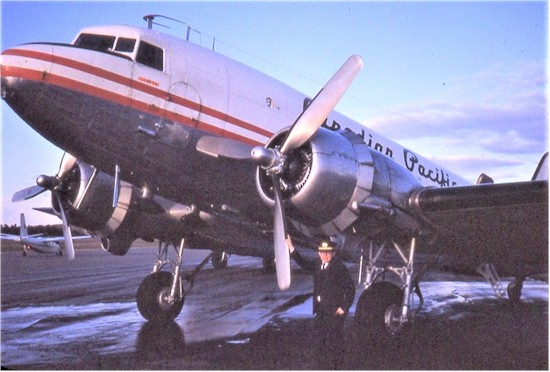 |
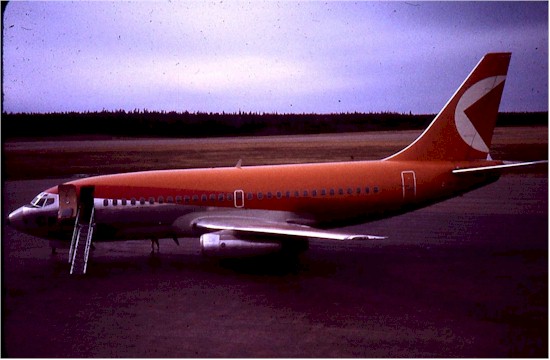 |
|
Dave Shore sends us this memory - Regarding NetLetter #1487 (Submitted Photos) CP had DC-3's until 1974 when the last one was sold to Harrison Airways. I’m not sure of the date of the last passenger service with them but when I started in 1967 there was a DC-3 flight operating Kamloops - Williams Lake - Quesnel - Prince George and another flight between Prince George and Smithers. The last aircraft was in CP Air colours. Dave Shore, Richmond B.C. |
|
Richard Begin sent us this memory after reading the NetLetter #1487 (Remember When) - Can’t agree more with Monika’s story. I so enjoyed and laughed out loud while reading about the loss and washing of meat coming out of the oven on takeoff. A very similar situation happened to me on a Miami to Toronto flight. On takeoff, 20 filets came out and landed on the floor. With a full load, there were not too many options so I washed them off, borrowed some veggies from first class and reconstructed the meal. No one was the wiser. I mixed them up in the serving trollies so that my colleagues didn’t known if the tray they were serving had the washed meals. And yes, those were the days that passengers had class and knew which utensil to use. Richard Begin. |
|
|
|
|
Terry has spent countless hours scanning issues of internal company publications going back over 60 years to preserve periods in history.
|
|
 |
|
|
Ken suggested viewing the videos linked below showing then Princess Elizabeth during her first visit to Canada in 1951. The RCAF operated 24 unpressurized North Stars as military transports. Six of those aircraft were built with passenger interiors and temporarily operated by TCA while waiting for their pressurized North Stars. The opening photo in this issue and the photo above show one of those early aircraft. The RCAF also acquired a single pressurized North Star for VIP use, designated C-5. It was the 71st and last North Star built. It was similar to the pressurized airline version built for TCA, CPA and BOAC, but was unique in using Pratt & Whitney engines from the Douglas DC-6, rather than the notoriously loud Rolls-Royce Merlin engines on all other North Stars. It was delivered in July 1950 and was retired in 1966 and later scrapped. The two videos below show that one-off C-5, then only a year old, during a royal visit to Canada in November 1951 by then-Princess Elizabeth and Prince Philip, her first of many trips to Canada. She became Queen three months later on the death of her father, King George VI. The second video (right), from a National Film Board documentary on that royal visit, has better colour footage of the C-5 which they used on a brief sidetrip to Washington, DC, also her first visit to the USA. The President then was Harry Truman. Interestingly, her flight to Kenya three months later, the first leg of a planned lengthy trip to several Commonwealth countries, and her unexpected return trip as Queen a few days later after her father's death, were on a BOAC Argonaut, the name used by BOAC for their 22 Canadair North Stars. Editors' Note: Both videos begin at the point where the aircraft is visible. |
|
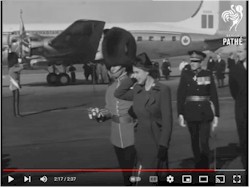 |
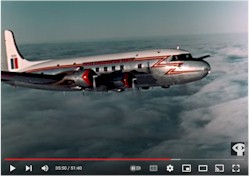 |
|
Sources and links: The Canadair North Star by Larry Milberry |
|

